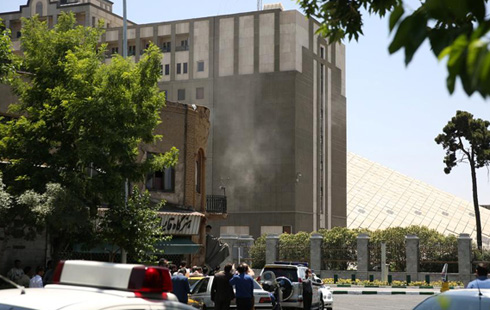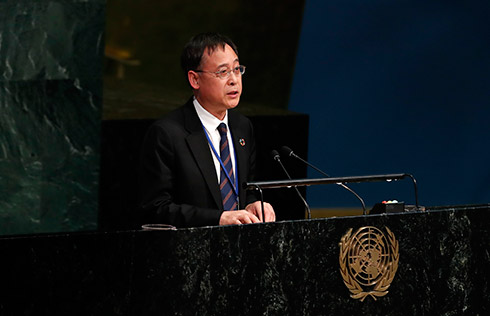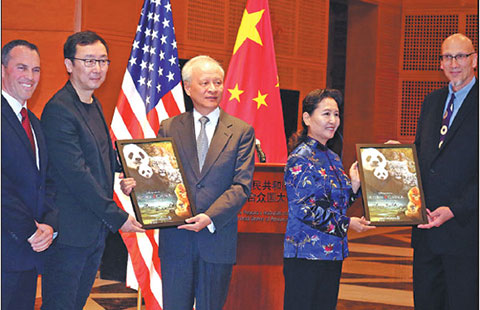Initiative cannot be separated from SCO
China's Belt and Road Initiative has prompted broad interest not only at the official level but also among analysts and experts. The central question that many are discussing about this initiative is: "What does it mean in economic, cultural and especially geopolitical terms?" Indeed, is it just a declaration of intent or an actual, concrete and practical project?
The Shanghai Cooperation Organization summit on June 23 and 24 will probably be an important opportunity for Chinese President Xi Jinping to re-articulate the Belt and Road Initiative and give it a more realistic shape, especially because the SCO summit will take place in the context of increasing geopolitical contradictions on the one hand and the active reformatting and accommodation of Central Asian and Eurasian spaces on the other.
The Belt and Road Initiative is a long-term and ambitious strategy so is the Russian strategy of creating the Eurasian Economic Union. And the two projects are supposed to be conjugated. Those who analyze Russian and Chinese thrust for pivotal role in Central Asia often consider if Russia can provide security arrangements for the region and China can support economic development. Such a perception, however, looks quite simplistic and superficial.
According to widespread and stereotypical perceptions Russia-led arrangements imply Eurasian Economic Union and Collective Security Treaty Organization and China-led arrangements imply SCO and the Belt and Road Initiative. That's why the statements about the possibility of conjugation of these two sets of arrangements look, so far, vague.
The SCO's agenda, hitherto primarily focused on Central Asia, will obviously become broader with the inclusion of India and Pakistan. This would complicate the situation of the SCO's existing Central Asian members and could become an excessive burden both for these states and the organization itself.
Uzbekistan's president has said the SCO is likely to be joined by two nuclear powers that are in permanent conflict. Besides, not all SCO conventions and agreements adopted within the organization are implemented in full, especially in the realm of confidence measures and military activity in the border areas. New entrants to the SCO are even more sensitive to such issues.
So the SCO is changing structurally and functionally; it has taken an essential step forward and shouldered an unprecedented and comprehensive ambition: to accommodate and shape the overall perspectives of three regions - Eurasia, Central Asia and South Asia. Euro-Atlantic area which is outside the, so to speak, "zone of SCO responsibility", has its own gravity force for Central Asians. In this sense, the overall security arrangements, economic strategies and even socio-cultural life in the region are now shaped in a very eclectic way.
Ultimately, the Belt and Road Initiative cannot be considered separately from the SCO. Three types of countries in the SCO/Belt and Road Initiative exemplify a more complex, eclectic strategic environment than that imagined under the romantic rubric of the Silk Road.
First, construction of the Andijan-Osh-Irkeshtam railway can help connect China's coastal region and Amsterdam through the land route, which will be 8,000 kilometer shorter than the sea route through Suez Canal. But this project, designed in 1997, still remains unrealized because of disagreements between Kyrgyzstan and Uzbekistan.
Second, from Turkmenistan, a non-SCO country, four gas pipelines already stretch through Uzbekistan and Kazakhstan toward China. This means that economic cooperation can be developed at bilateral levels when interests so dictate.
And third, Afghanistan is apparently covered by the Belt and Road Initiative and possibly by the SCO as well. Afghanistan's security and economic recovery gets strong help from NATO/US and their military presence in the country.
How will all these eclectic arrangements be adjusted with the SCO and Belt and Road Initiative frameworks remain to be seen. And it will be interesting to watch how the Belt and Road Initiative accommodates many different travelers on the routes.
The author is director of the non-governmental Research and Education Institution, Bilim Karvoni (Knowledge Caravan), in Tashkent.

(China Daily 06/17/2016 page9)


























